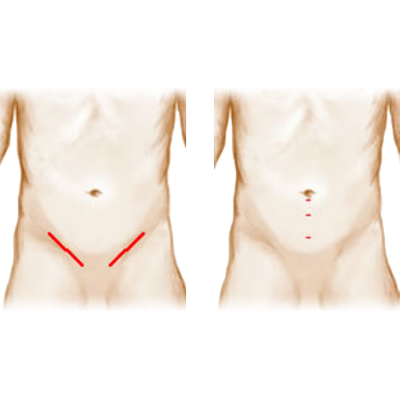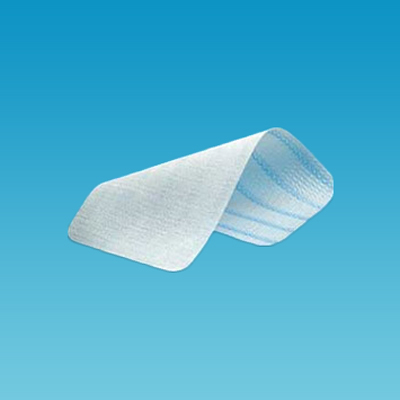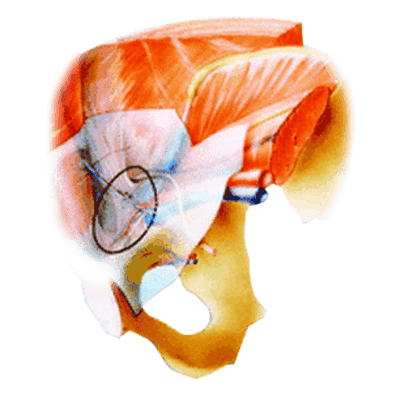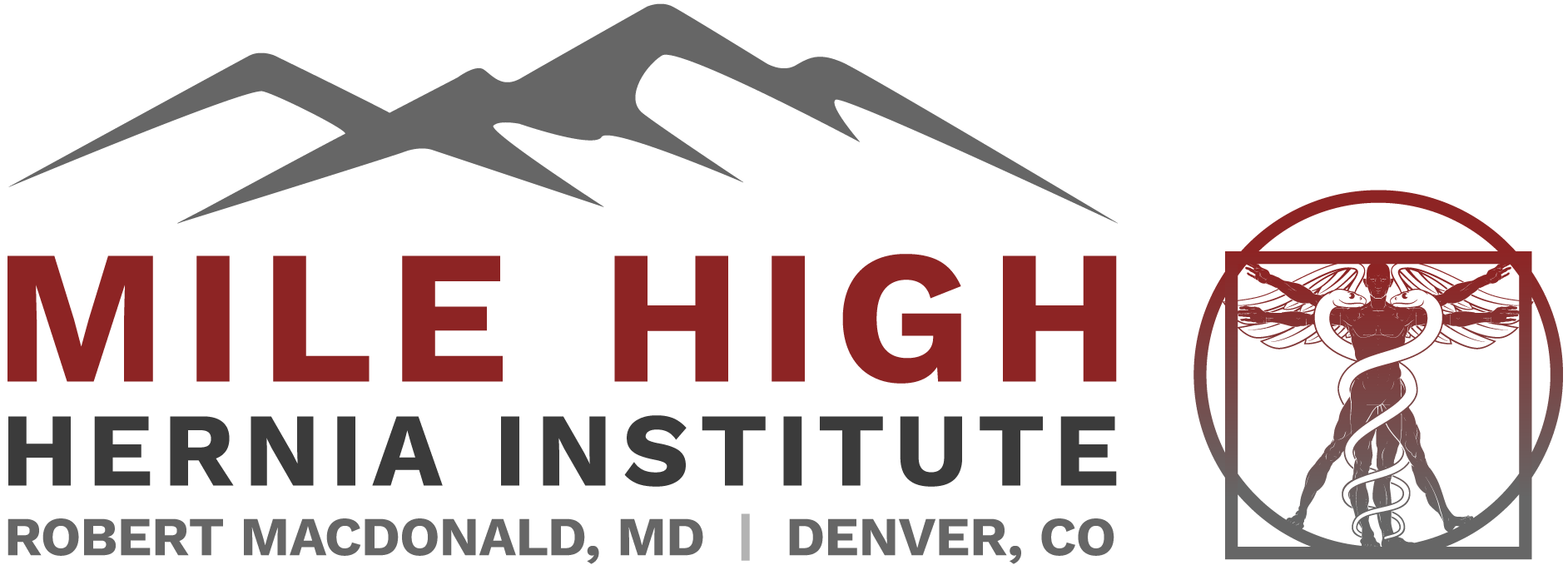Inguinal Hernias
Inguinal Hernias
An inguinal hernia is the most common type of hernia. It occurs more commonly in men and can occur at any age. Most hernias are probably congenital, while others occur with aging as the muscle in the groin weakens due to stress(lifting, coughing, etc.). As the hernia(hole) enlarges, the contents of the abdomen behind the muscle begin to push through. This is perceived as pain or seen as a bulge. Pain is usually felt in the lower abdomen(groin), but maybe in the testicle in men, and occasionally goes down the front of the thigh. The bulge may come and go and discomfort may be intermittent. Hernias can be dangerous if the intestine drops through the hole and gets trapped(incarcerated hernia). It is common to have inguinal hernias on both sides at presentation.
Hernias most often cause symptoms with activity or standing. If an inguinal hernia causes symptoms it should be repaired. If no symptoms are present, and the hernia is small, it may be watched provided the intestine is not involved, or the hernia is not enlarging. However, hernias never repair themselves and usually get larger with time. It is easier to repair hernias when they are small.

Inguinal Hernia Surgery
Traditionally, inguinal hernia surgery has been performed using an incision in the groin area immediately over the hernia (“open” hernia repair). As with many other surgical procedures today, groin hernia surgery can be performed using very small incisions and the laparoscope(camera). Clinical research and personal experience has shown that laparoscopic hernia repair often allows a more comfortable and speedy recovery than open hernia surgery. It will frequently eliminate the risk of chronic pain seen after open groin hernia surgery. Recurrence rates with either surgery are very low(<1%). Open repair may be mandatory when previous abdominal or prostate surgery prevents use of the laparoscope. Laparoscopic inguinal hernia surgery requires a general anesthetic. During laparoscopic hernia repair, a small telescope(laparoscope) is inserted below the navel. Two additional incisions are made slightly below the navel. The hernia is visualized from behind the muscle, and a patch(mesh) is placed to cover the hole and strengthen the muscle. When the patient awakens from surgery, there is skin glue where the incisions were, but no stitches or dressings. The operation typically lasts 20-30 minutes.

Mesh
Mesh is a soft, lightweight synthetic material. For inguinal hernias, the patch is usually 4×6 inches. The tissues of the body accept and grow into the mesh almost immediately. The mesh essentially becomes part of the abdominal wall muscle. The risk of a complication from the mesh is very small(<1/500).

Location of Mesh
In this image, the mesh can be seen covering the hernia(black circle). The mesh is located immediately behind the muscle but in front of the cavity that contains the intestines(abdominal cavity). When the patient lifts or exercises, the pressure is transmitted over the entire surface area of the mesh, essentially taking the pressure off the area of weakened muscle. This allows the patient to return to any and all activities, without risking a recurrence of the hernia, as soon as it’s comfortable. The mesh is secured in place with absorbable fasteners, dissolving after several weeks when the mesh has become incorporated into the abdominal wall muscle.
Recovery
- Some discomfort should be anticipated, and a pain pill is prescribed. Ibuprofen(Motrin, Advil) and acetaminophen(Tylenol) can both be used as directed and may be all that’s required.
- Ice applied to the groin area and around incisions reduces swelling. For a few days, men are asked to elevate the scrotum on a towel placed between the thighs when sitting or lying down. This reduces bruising and swelling of the scrotum.
- Showering is permitted the day after surgery.
- After a few days rest, most healthy adults are allowed back to restricted work. Walking and climbing stairs is unrestricted, beginning immediately after the operation. Light exercise can usually start in about 10 days. Lifting will not damage the repair, but heavy lifting(>30 lbs.) should be avoided for 10-14 days.
- Laparoscopic inguinal hernia surgery is done on an outpatient basis if the patient’s health permits.
- Cycling, walking, or light running on a treadmill are good ways to start exercising. Pilates and Yoga usually work well at this time, too. Return to more vigorous exercise usually requires a few weeks.
- Sexual activity can be resumed when comfortable. Patients should wait 2 weeks before hot tubs, swimming, or baths. Driving is usually permitted after a few days, provided pain medicine has been discontinued, and basic driving skills are not inhibited by discomfort.
- Follow up in the office is arranged two weeks postoperatively.
- For more specifics on recovery from inguinal hernia surgery, click here
What to Watch For
Bruising is NOT uncommon and occurs in the lower abdomen, groin, and genitalia. It typically resolves within 2 weeks. Some patients may find it difficult to urinate immediately after surgery. In general, inguinal hernia patients are required to void before they are discharged home to assure this isn’t a problem. Rarely, a urinary catheter is needed for a short period of time, particularly if the patient has an enlarged prostate and/or normally gets up at night frequently to urinate.
Vasectomy
Men considering a vasectomy should discuss this with their surgeon prior to laparoscopic inguinal hernia surgery. The procedure can be performed during the hernia surgery if desired, without any added incisions or recovery. It is not reversible and semen analysis is required before discontinuing birth control.
